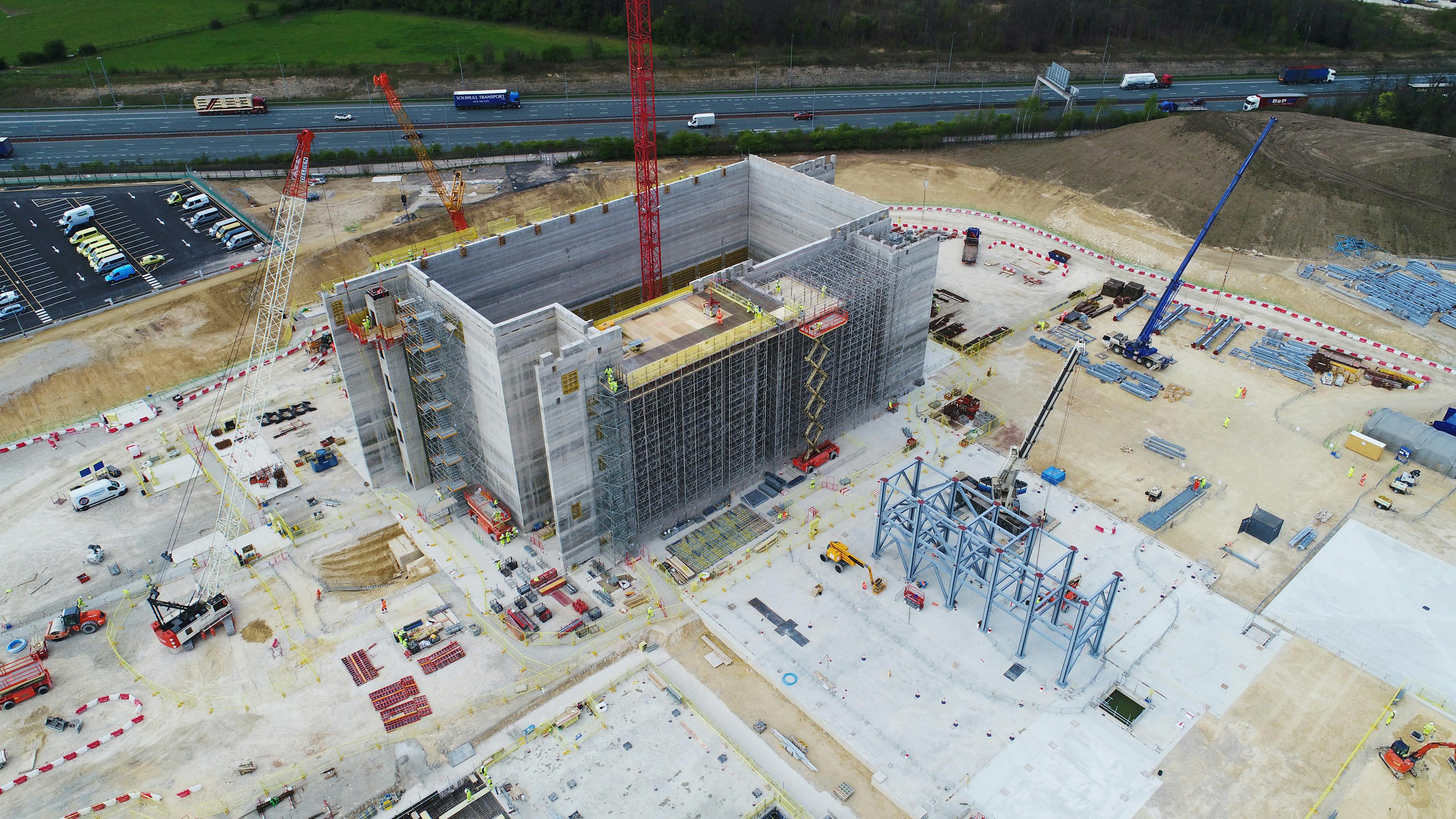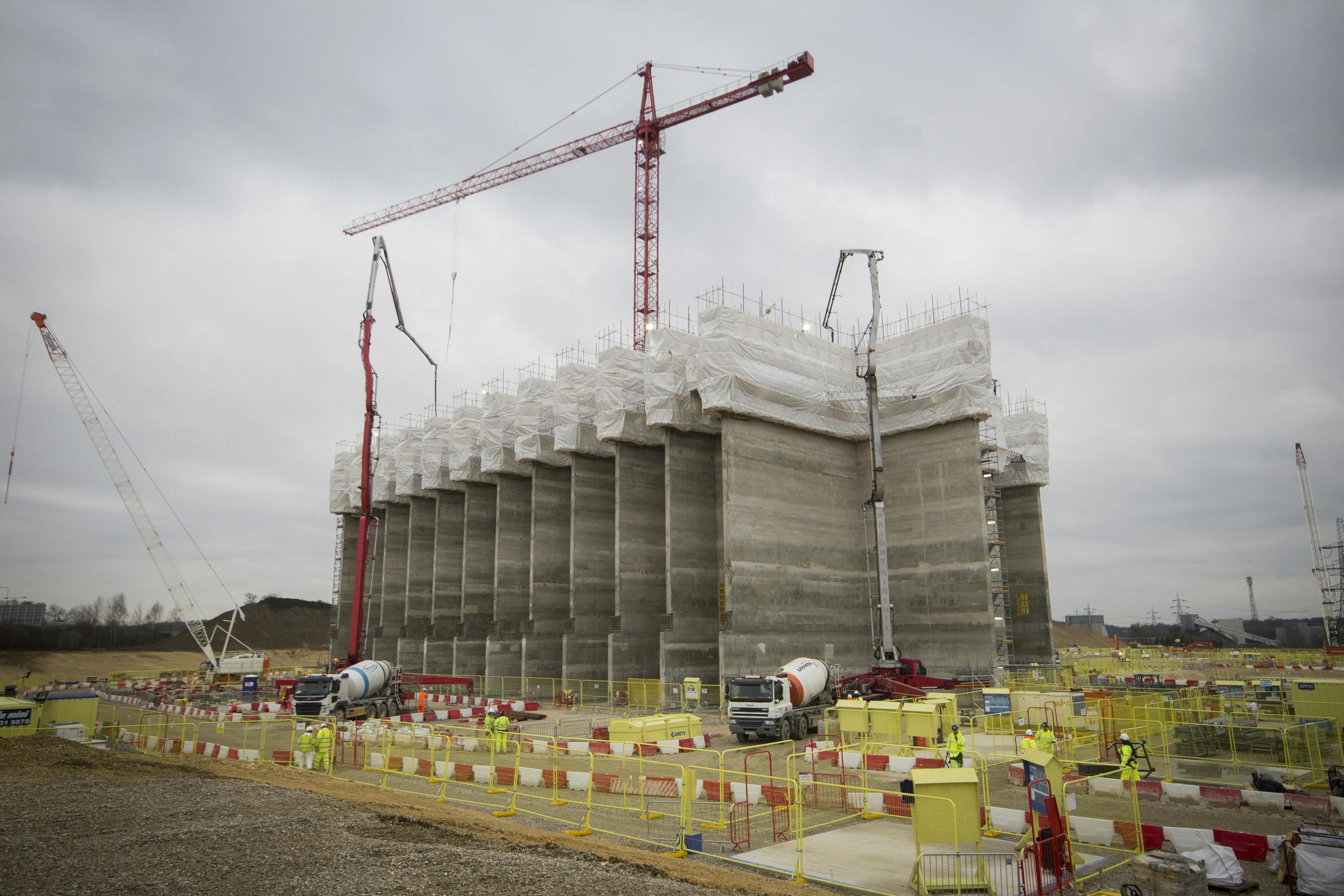
Ferrybridge Energy from Waste
Careys was awarded a superstructure and substructure packages of works at this EfW facility. These included constructing the tipping hall, waste bunker, boiler hall, turbine hall, stack foundation and flue gas treatment (FGT) structure. We also provided associated infrastructure works, including over 5,000m of drainage, 12,000m of service ducts and 10,000m2 of external concrete slabs and tarmac roads.
Client
SSELocation
Ferrybridge, West YorkshirePrincipal Contractor
Hitachi Zosen InovaWhen it is operating at full capacity, this impressive new Ferrybridge EfW facility will convert 675,000 tons of waste into fuel each year. It will use the fuel by-product to generate 70MW of clean, sustainable electricity – enough to provide power to 160,000 homes across Yorkshire and the north of England.

Implementing a large-scale slip form system to construct massive waste bunker in two weeks

Implementing a large-scale slip form system to construct massive waste bunker in two weeks
On this project, we deployed the largest slip form system that we had used to date to construct the vast waste bunker, which measures 64m x 30m x 25m, as well as the tipping hall, which rises to 24m in height.
To construct the waste bunker – which required 4,500m3 of concrete with 800 tonnes of reinforcement – we used the slip form system to carry out a continuous pour. This methodology enabled us to successfully build the huge structure in only 11 days. Our team worked in shifts round the clock over the entire duration of the pour to ensure that the waste bunker would keep rising throughout the days and nights.
Using digital innovation to adapt the slip form rig for maximum efficiency and safety
Using digital innovation to adapt the slip form rig for maximum efficiency and safety
Thanks to a typically thorough planning process – supported by the substantial engineering and building information modelling (BIM) expertise delivered by our in-house design team - our implementation of this system was safe, smooth and effective.
We employed 3D and 4D techniques to create a virtual model of the slip form rig, which enabled us to trial the performance of the rig and system in advance and arrive at the best logistical configuration and most efficient programme. Our application of BIM technology across the entire project also enabled us to lay out the different areas of the site for circulation of plants, material delivery and safe access of personnel on site.
This allowed us to identify a six-week time saving in the programme. Specifically, while water testing the waste bunker, we developed a value engineering option that allowed us to install a temporary tunnel around its perimeter to allow water testing from outside the bunker. This innovative solution permitted access for inspectors to water test, while allowing any potential repairs to be made, and freeing up the follow-on trades to get onto the site and commence work above the bunker earlier.
Additionally, in order to ensure maximum health and safety for our team, we adapted the slip form rig to provide access stairs (instead of access ladders) between the top deck, working deck and hanging platform. This vastly improved the safety features of the rig for those working at height.
Careys’ commitment to delivering the highest standards earned client satisfaction
Careys’ commitment to delivering the highest standards earned client satisfaction
Our dedication to providing consistently high-quality work – which is bolstered by our superior planning capabilities, innovative approach and insistence on maintaining a safe work environment – significantly contributed to the success of Ferrybridge EfW project.
We completed the bulk of our responsibilities on-time, under-budget and with an exemplary health and safety record. These results, coupled with our accommodating attitude, detailed preparation and willingness to adapt to meet the requirements of the project, gained the client’s appreciation.
This approach was in evidence from the beginning of the project, when we held frequent meetings with the client - SSE, and main contractor - HZI, during the pre-construction planning phase. During these sessions, we presented the client with a fully resourced programme and 3D phasing sketches of our methodology. This helped us to explain and demonstrate our construction plan and offer reassurance.
Throughout the project, we provided the client with weekly – rather than the industry-standard monthly – progress reports.
In addition, we accommodated the client’s desire to change the original design by making numerous alterations to our original logistics plan, site phasing, drainage, service ducts and external hard landscaping works.
We'd love to hear from you, so please get in touch